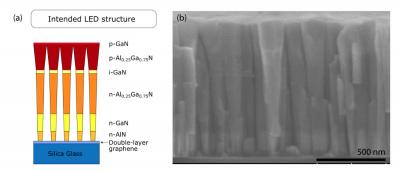
by MBF Admin | Jul 2, 2019 | 2D materials, Aerospace, AGM, Angstron Materials, Audio, Development, Graphene applications, Graphene Quantum Dots, Investment, Medicine, Products, Research, Rice University
Dotz Nano has shared a new research that finds its graphene quantum dots (GQDs) technology effective in treating brain injuries, strokes, multiple sclerosis and heart attacks. According to the company, the study demonstrated that these dots, manufactured from coal,...
by MBF Admin | Jun 24, 2019 | 2D materials, Aerospace, AGM, Angstron Materials, Audio, Development, Graphene applications, Investment, Medicine, Products, Research, Technical / Research
Purdue University researchers have found that adding a graphene monolayer to devices that protect the platinum microelectrodes of implantable neurostimulation devices can improve the lifetime and reliability of such devices, for the benefit of millions of people who...
by MBF Admin | Jun 23, 2019 | 2D materials, Aerospace, AGM, Angstron Materials, Audio, Development, Graphene applications, Graphene Sensors, Investment, Medicine, Products, Research, Technical / Research, Transistors
Researchers at Osaka University have invented a graphene-based biosensor to detect bacteria such as those that attack the stomach lining and that have been linked to stomach cancer. When the bacteria interact with the biosensor, chemical reactions are triggered which...

by MBF Admin | Jun 23, 2019 | 2D materials, Aerospace, AGM, Angstron Materials, Audio, Development, Graphene applications, Graphene Sensors, Investment, Medicine, Products, Research, Technical / Research
Researchers at The University of Texas at Austin have developed a graphene-based wearable device that can be placed on the skin to measure a variety of body responses, from electrical to biomechanical signals.The device is so lightweight and stretchable that it can be...
by MBF Admin | Jun 12, 2019 | 2D materials, Aerospace, AGM, Angstron Materials, Audio, Development, Graphene applications, Graphene Sensors, Investment, Medicine, Products, Research, Technical / Research
Researchers at the International Iberian Nanotechnology Laboratory (INL) and Research Institute for Life and Health Sciences (ICVS) at the University of Minho in Portugal will develop a graphene-based device that allows the early diagnosis of malaria, in a fast and...

by MBF Admin | Jun 4, 2019 | 2D materials, Aerospace, AGM, Angstron Materials, Audio, Development, Graphene applications, Investment, lighting, Medicine, Products, Research, Technical / Research
A research team led by professors Helge Weman and Bjørn-Ove Fimland at the Norwegian University of Science and Technology (NTNU) has succeeded in creating ultraviolet light on a graphene surface. This could be beneficial for eliminating the toxic mercury element...




